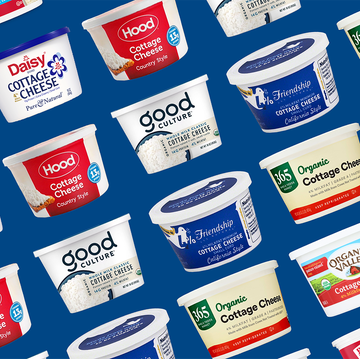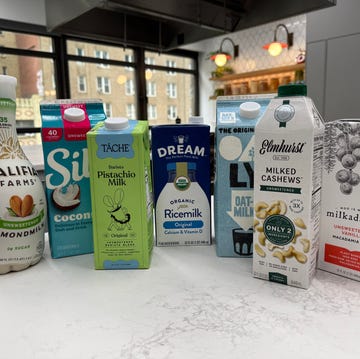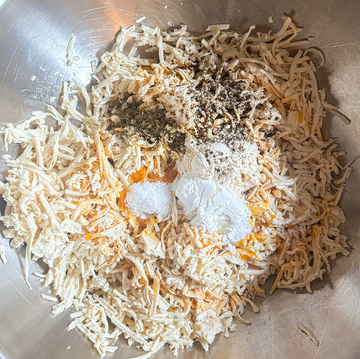Every October, you can expect to hear the same terrifying warning: your Halloween candy may be tampered with something dangerous. Whether it’s razor blades, marijuana, or rainbow-colored fentanyl, there’s always a new thing for parents to fear when they send their kids trick-or-treating.
Online search trends for drug-laced Halloween candy spike every year as the holiday approaches. The news cycle always features at least one story about the latest drug that’s supposedly sneaking into Snickers bars. And many parents approach Halloween with a sense of dread and fear because of it. But do we need to be thoroughly checking our kids’ candy stashes?
Joel Best, a professor of sociology and criminal justice at the University of Delaware, is the nation’s foremost expert on the phenomenon of contaminated candy. Since the late 1960s, he’s been compiling and analyzing data and news stories about the subject. His conclusion: the threat of tampered candy is just a myth.
Back when he started his research as a graduate student, the warnings about contaminated candy were widely circulated. And unlike other crimes with motives that could be explained, Best struggled to find a reason why people would tamper with Halloween candy.
“I can’t for the life of me imagine what the reason would be,” he said. But regardless, it was a threat that his peers unequivocally believed. So Best set out on a mission to examine media from as early as 1958 to identify actual cases of candy contamination.
“The really striking thing was, there was no example of a child killed or seriously hurt by a contaminated treat,” he says. “I just couldn’t find any evidence of it.”
His research was first published in 1985, and since then, he continues to update his findings. And not much has changed. Best has only found five cases of death by contaminated Halloween candy in the United States. One was an isolated act of filicide: a father intentionally poisoned his son to get life insurance money. The other four cases were ultimately retracted as the causes of death were proven to be unrelated to poisoned candy.
How Did The Myth Start?
But if there have been no instances of poisoning trick-or-treaters at random, then why is the myth still so prevalent? According to Best, it's been around as long as trick-or-treating itself.
Since the practice of going door to door for candy first gained traction after World War II, stories have swirled around about the dangers of taking candy from strangers. In fact, Best's colleague, folklorist Sylvia Grider, recalls warnings of criminals pouring melted pennies into the outstretched hands of trick-or-treating children. But the fact that many of these myths surround the candy itself is no coincidence.
“Contaminated food is a motif a lot of contemporary legends have,” Best says. “There have been unfounded rumors about horse meat in McDonald’s hamburgers. Rats in Kentucky Fried Chicken. There are even stories about rats in meat pies in 19th century London.”
Why Do People Still Believe It?
Part of what has made contaminated candy legend so resilient is the idea that it's not entirely out of the realm of possibility. "Most of us don't believe in ghosts and goblins," says Best, "but we believe in criminals."
It has also adapted over time, capitalizing on current fears that plague the public. "There's a pattern," Best says. "In September of 1982, following the Chicago Tylenol poisonings, there was a lot of speculation, with people worried that there would be a wave of contaminated Halloween candy."
The concerns were so widespread that candy sales reportedly dropped by over 20 percent that year. The cycle repeated again after 9/11, and again following the 2014 legalization of recreational marijuana in Colorado. It happened again just last year, where fears surrounding fentanyl stoked concerns about rainbow-tinted opioids infiltrating candy stashes around the country. Media pundits and even elected officials made public statements warning the public about the nonexistent threat.
For nearly 40 years, Best has spoken with journalists and news outlets all over the country to dispel misinformation surrounding contaminated candy. And even with published research that shows otherwise, much of the public still believes the contaminated candy myth. "I've been in The New York Times, The Washington Post, The Today Show. You name it, and my research has likely been mentioned there. It hasn't made a dent at all," Best admits. "It's been a great lesson in humility."
Even still, he doesn't fault parents for checking their kids' candy; a 2022 Canadian study found that over 84 percent of parents do it. While he doesn't believe it's necessary, "checking candy is fundamentally harmless," he said.
But that doesn't mean Halloween isn't dangerous. According to AAA, October 31st is one of the deadliest holidays for children—not because of candy, but because of cars. Trick-or-treating in the dark, wearing costumes that can obscure vision and limit motion, and walking unaccompanied all make kids more unsafe than a piece of candy ever will.















